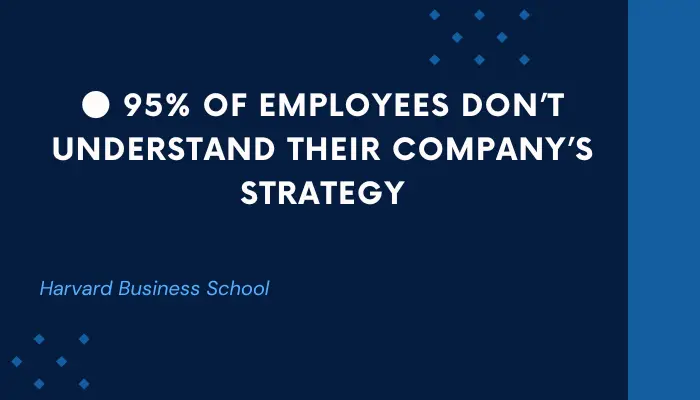Do you want to run your business effortlessly and effectively? I am sure you do. You can run your business projects effortlessly by following the planning cycle. But what is the planning cycle?
What is the planning cycle?
The planning cycle is a set of stages that describe how you can successfully carry out any activity in your business to achieve the goals. The different stages of the planning cycle include defining goals, setting premises, evaluating alternatives, identifying resources, formulating and implementing the plan, and monitoring the plan.

The planning cycle helps you avoid bottlenecks and risks. It is a vital part of operating a business successfully. This article will help you understand how the planning cycle can help you grow in business.
💡 Helpful Statistics About Planning: ● Companies with written business plans grow 30% faster. ● Businesses with a plan are far more likely to get funding than those that don’t have a plan. ● 67% of well-formulated strategies failed due to poor execution. (HBR) ● 60–90% of strategic plans never fully launch. ● 48% of leaders spend less than a day on strategy each month. (HBS) ● 95% of employees don’t understand their company’s strategy. (HBR) ● 61% of executives feel they are not prepared for the strategic challenges. (HBR) ● 77% of successful companies translate their strategy into operational terms and evaluate it on a day-to- day basis. (Palladium)

Table of Contents
Explanation of the planning cycle
The planning cycle refers to a stepwise process. It offers a framework to perform a task or project. It is a standard life cycle a project goes through to reach its goals. The planning cycle unites all the aspects of planning in one coherent procedure.
In other words, planning is the primary function of management, planning acts as a base for the entire function of management; it lays the foundation of the process of management.
As to performing any activity, first of all, planning is undertaken. All management functions like organizing, staffing, and control are interconnected in the planning function. These management functions can be performed only after the proper planning.
Many managers use the planning cycle to run through tasks. Whether you are manufacturing a vehicle, designing a new product, or testing new software, all these projects will pass through the same stages. The time and pattern to complete the task may vary, but the common purpose is to reach the goals.
The planning process is usually considered linear, but it is better to see it as a cycle because you may have to make some adjustments and go back to the previous stage in the cycle.
For example, your business is multiplying. You want to relocate your office to a bigger place. It is excellent news. Now the responsibility of planning and organizing all the activities involved in relocating is upon you. Not so great news now!
You have to think if relocating is feasible and consider a viable location. Also, factor in timings and cost. Additionally, how will you minimize business downtime? So, where would you begin?
Confused!!!
Try the planning cycle.
Stages of the planning cycle
A project broadly consists of three main stages; the beginning, middle, and final. In the first stage, the groundwork is finalized. During the second stage, the activities are performed. In the last stage, the project is concluded.
However, the complete stages of a planning cycle include defining goals, setting premises, evaluating alternatives, identifying resources, formulating and implementing the plan, and monitoring the plan.
Together these stages represent the planning cycle. These stages develop the path that takes a project from beginning to end. The details of all stages are discussed in the following section.
Define goals
The first stage in the planning cycle is very critical. It is to clarify what you want to do and what needs to be attained in this planning process. Analyze your situation and gather information.
The vision statement specifies the long-term objectives of the business. Similarly, the mission statement provides a broad guideline for reaching those objectives. But the planning cycle should define specific goals. These particular goals should support the vision and mission statements.
Goals should be realistic and attainable. Targets should also be stated in measurable terms. For instance, the goal should be “to increase sales by 20% in next six months,” not “increase sales to the fullest extent.”
You define your specific and measurable goals in the first stage of the planning cycle.
Set premises
Managers need to make some assumptions about the future to plan. We all know that the external and internal conditions of the business won’t stay the same. To incorporate change in the planning process, managers forecast changes.
The external changes may include new technology, competitors’ actions, or legal regulations. In comparison, the internal changes can be the budget, employee training, or new office. These assumptions about the future are plan premises.
It is of paramount value to state these premises because managers monitor this information. If plan premises are not true, it leads to plan revision and updating.
Evaluate alternatives
By this stage, you know your goals and premises very well. Now you should generate as many ideas as possible. Do not grab the first idea and execute it. Better spend some time evaluating alternatives.
There is more than one right way of doing things or achieving goals. For example, increasing sales by 20% can be possible through different methods. You can hire more salespeople, create a new advertising plan, lower prices, or expand in another area.
The planner should find possible alternatives and evaluate them. Identify how difficult it can be to implement each alternative. Also, what are the chances of success for each option?
Managers can also seek valuable input from different sources while identifying alternatives.
Identify resources
Once you have explored different ideas, you must decide which one you want to execute. One major factor in selecting the final idea is resources. Managers need to identify the resources required to pursue a plan.
Resources include money, personnel with specific skills, machinery, tools, software, office, or experience. You must check which resources the company already has, which new resources are needed, and how you will acquire those resources.
Identification of resources should be done in conjunction with the previous stage because each alternative needs different resources. You have to assess the cost and risk of each alternative and then select the one you want to implement.
Formulate a plan
After the resource calculation, you should devise a plan to achieve the goals. A plan gives the most effective and efficient means to reach the goals. Management will create a framework that can take a business to its goals.
The plan defines:
- Tasks that need to be done
- The sequence of activities
- The interdependence of activities
- Who is responsible for which task
In a nutshell, a plan will list activities that will lead you to your goals. The plan will encounter all aspects including assets, human resources, risk, equipment, etc.
Evaluate and implement the plan
In the previous stages, you have evaluated alternatives, now is the time to evaluate the plan. The plan you just made needs a final evaluation. Whether it is worthy to implement, it may not be good enough to implement.
Evaluate the plan at this stage and discard it if not worthwhile. It is very frustrating after you put so much effort and time into planning. But it is better to reach this conclusion now rather than after investing irreplaceable resources and time.
Evaluation of the plan will give you more opportunities to explore better options. On the contrary, if you evaluate your plan and consider it beneficial for the business. Then go ahead and implement the plan. A good plan also inculcates risks and contingencies.
Track and monitor the plan
After implementing the plan, it is crucial to track your plan’s progress. Consider the ways to monitor the plan. Some tools like Critical Path Analysis and Gantt chart are very helpful in allocating activities, resources, and timelines.
In addition, quality assurance, robust reporting, and cost controls assist you in monitoring the plan. These factors help in rapidly identifying and correcting deviations from the plan. You can make changes in the plan, update it and then implement them.
The plan demonstrates which activities are most crucial, which can cause problems, and which activities can cause delays. You should be able to regularly monitor and adjust the plan to keep things on track.
Pros and cons of the planning cycle
In this chaotic world, it is hard to progress without planning. The planning cycle has many advantages as well as some disadvantages. Let’s discuss them below.
Pros:
The planning cycle facilitates management by goals. As the cycle begins with defining goals, it helps management derive steps that lead to accomplishing goals.
It focuses on actions. When employees are goal driven, they focus on activities that achieve them.
The planning cycle improves resource allocation. The planning cycle helps determine where resources are needed the most and how to utilize them to their fullest.
Planning cycle set performance standards. It considers ways to monitor and track progress, pushing employees to perform their best.
The planning cycle also motivates employees and helps them stay committed to the task.
The planning cycle allows flexibility. It considers changes in the environment and updates the plan regularly.
Cons:
The planning cycle prevents actions. Sometimes managers get so focused on planning every little detail that they don’t proceed to the implementation phase.
The planning cycle can lead to negligence. After investing time and resources, managers can become so satisfied that they don’t monitor progress and changes during implementation.
The planning cycle also hinders creativity. If not implemented correctly, it prevents flexibility. Managers are forced to follow the steps when their experience can tell that this plan is not working.
Is the planning cycle essential for business?
The planning cycle is essential for business because it ensures the smooth flow of necessary steps, from defining goals to monitoring. It is a beneficial process for managers and employees as it maintains the focus on activities that help accomplish goals.
The planning cycle also considers vision and mission statements which means these statements are not just for show; they are utilized in the goal identification stage. It also encourages people from diverse backgrounds to participate in the planning process.
Diversification helps in bringing a new perspective to the process. Also, employees feel acknowledged and empowered when they contribute to the process.
Conclusion
Every business has goals they want to accomplish. So, they must choose the best way to reach those goals. The planning cycle is undoubtedly the finest way to attain organizational goals.
The planning cycle is a set of stages that describe how you can successfully carry out any activity in your business to achieve the goals. The different stages of the planning cycle include defining goals, setting premises, evaluating alternatives, identifying resources, formulating and implementing the plan, and monitoring the plan.
The planning cycle considers the business’s vision and mission statements. It also brings focus on activities that help in achieving goals. Additionally, this cycle motivates and empowers employees.
Your business can avoid many risks and bottlenecks if you have correctly used the planning cycle, as it ensures the accurate execution of tasks leading to the successful implementation of plans.


